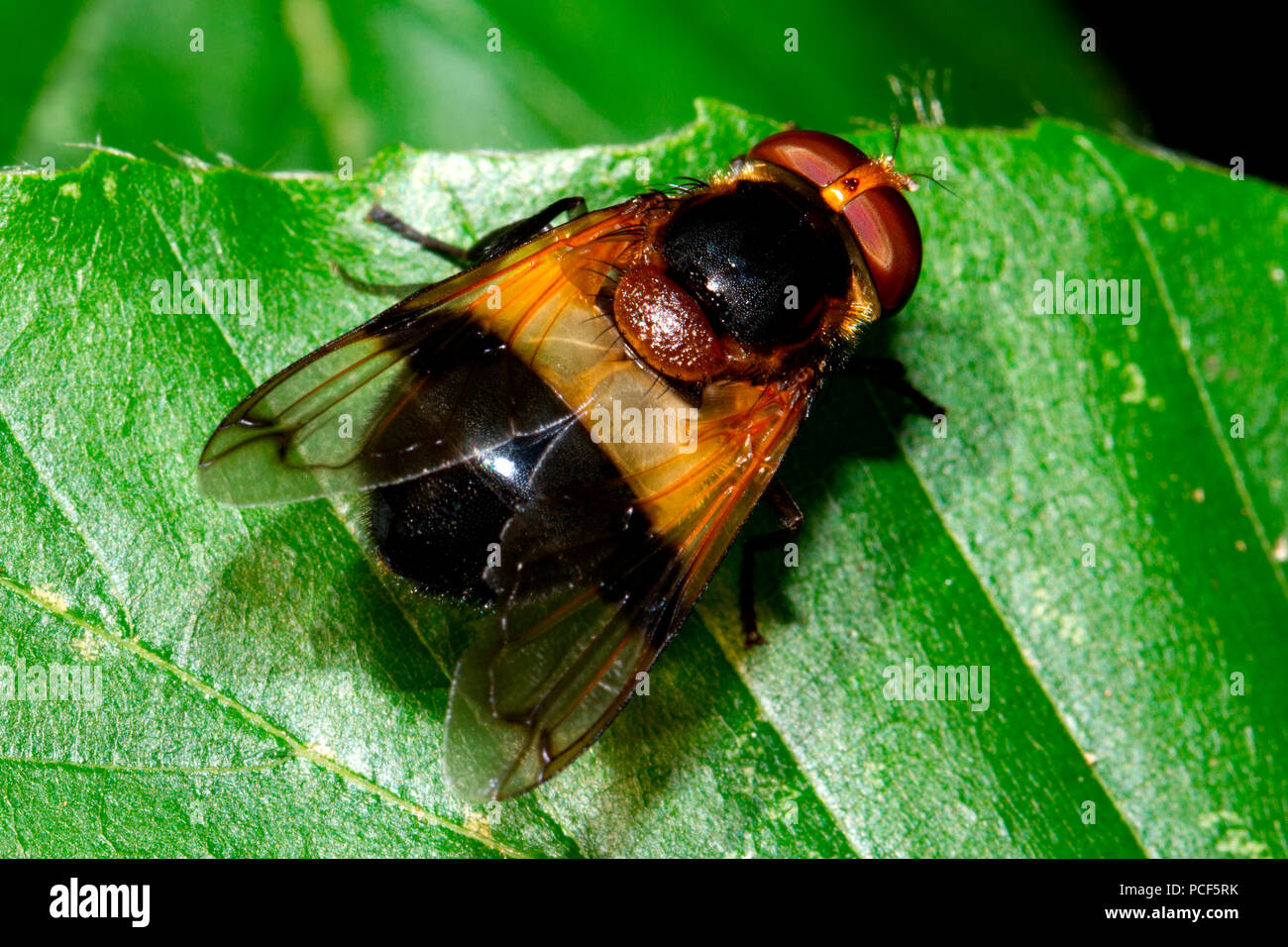

After capturing its victim, the hover fly larva holds it in the air, sucking it dry of juices nearby aphids or beetle larvae appear to pay no attention to the demise of their unfortunate neighbor. In one study, the diminutive chevroned hover fly was found to exert from seventy to one hundred percent control of aphids. Hover flies are one of the most useful natural enemies of plant pests some species have been estimated to eat up to 1,200 aphids during the larval stage. Evidence now shows that at least some species detect their prey through chemical odors. Lacking eyes, hover fly larvae were long thought to blindly detect their prey by raising the front half of their body and swinging it from side to side until they bumped into a tasty morsel. Resembling small slugs or caterpillars, the larvae are easily mistaken for pests. Most hover flies, and the majority of the common garden species, have aphid-feeding larvae, while a few prey on leaf-beetle larvae and eggs, or on other insects. They need nectar to fuel their high-energy flight, and females need pollen to produce their eggs. A defining characteristic of the Syrphidae is a “spurious” wing vein-a fold in the middle of the wing membrane that is best seen with a hand lens.Īdult hover flies feed on nectar and pollen and, occasionally, on the honeydew exuded by aphids. Most hover flies have glossy bodies, but a few species are fuzzy and resemble bumble bees. Large hover fly has a wide, somewhat flattened abdomen, not at all like the plump shape of bees. Sphaerophoria cylindrica is slender, and, as the name implies, cylindrical except for its markings, it really does not resemble a bee at all. Other common species lack the bee’s familiar markings or shape. The careful observer will note, however, that the hover fly has shorter antennae, a stout waist, and only one pair of wings (the bee has two pairs). Many mimic bees, with coloring that advertises danger. Not that the conscientious gardener would want to swat most syrphids! With few exceptions, hover flies are among our most abundant and helpful garden allies.Įven for those familiar with common garden hover flies, a closer look will reveal a surprising diversity of species. The second pair of wings is reduced to two little knobs, the halteres these function like miniscule gyroscopes, allowing the flies to quickly change direction-a useful ability when being chased by predators or a biped armed with a swatter. Unlike other winged insects, flies in the order Diptera (meaning two-winged) have only one pair of flying wings. This ability to hang suspended in mid-air explains its common moniker, hover fly.
#Pellucid hoverfly Patch
If you have ever paused near a patch of cosmos on a sunny summer afternoon, you are certainly familiar with the unique flight of the hover fly, as it zigzags about the blossoms, occasionally stopping in mid-air, its shimmering wings barely visible.


 0 kommentar(er)
0 kommentar(er)
